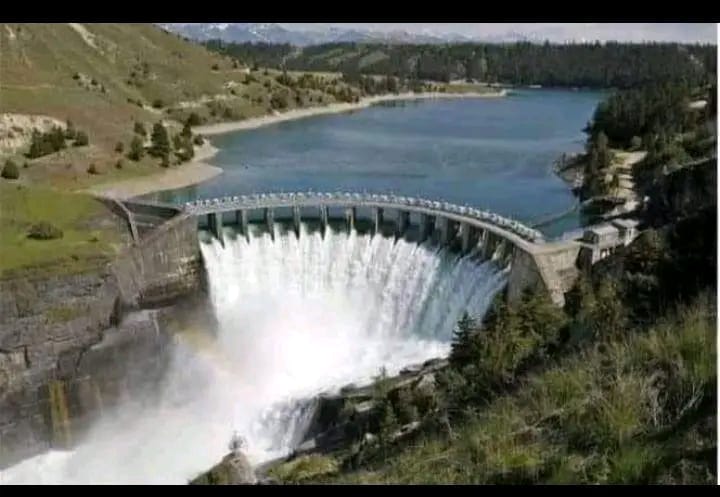The Republic of Cameroon officially had, in August, communicated its plans to Nigeria’s Ministry of Foreign Affairs regarding the opening of the floodgates of the Lagdo Dam, which it opened that same month.
This development has raised significant concerns, especially for the riverine areas within the River Benue catchment region. The residents of these areas are faced with the crucial decision of temporarily vacating their homes and seeking higher ground in anticipation of the potential release of water from the dam. The devastating impact of previous releases, notably the 2022 episode, has left a haunting memory, making proactive measures a necessity.
Read also: Nigerian Minister invites researchers to develop national AI strategy
NEMA and Advisories for Safety
The National Emergency Management Agency (NEMA) and various relevant agencies have issued advisories to residents in the affected regions and have consistently raised alarm about flooding since the beginning of 2023. These advisories emphasize the importance of taking action to ensure safety, including safeguarding pets and animal farms. Data from NEMA serves as a grim reminder of the catastrophic consequences of the 2022 floods, which displaced over 1.4 million people, resulted in 603 fatalities, and left more than 2,400 individuals injured. Additionally, the floods caused extensive damage, impacting 82,035 houses and a vast expanse of 332,327 hectares of land.
Blame Game and Unfulfilled Agreements
Sadiya Farouq, Nigeria’s former Minister of Humanitarian Affairs, attributed the scale of this disaster to the inaction of government branches. She noted, “There was enough warning and information about the 2022 flood, but states, local governments, and communities appear not to take heed,” highlighting a systemic issue. The yearly release of water from the Lagdo Dam in Cameroon, along Nigeria’s eastern border, often results in downstream flooding. Ironically, at the time of the dam’s construction in the 1980s, both countries had agreed to construct a twin dam on the Nigerian side to manage overflow. Regrettably, this agreement remains unfulfilled.
Incomplete Projects and a Missing Priority
The Nigerian government proposed the construction of the Dasin Hausa Dam in Adamawa State to mitigate the potential flooding from the Lagdo Dam in Cameroon. This shock-absorber dam was designed to be two and a half times the size of the Lagdo Dam, with the aim of supplying electricity to Cameroon’s northern region and irrigating 15,000 hectares of downstream crops. Regrettably, since 1982, the Nigerian government has failed to complete this crucial project, leading to annual flooding in communities across Kogi, Benue, and other northeastern states.
Senate’s Call for Action and Unfinished Business
In response to the recurring flooding, the Senate urged the Federal Ministry of Water Resources and Sanitation to revisit the construction of the Dasin Hausa Dam. However, this dam project doesn’t seem to be a priority, as indicated in the 2023 appropriation. The study and design of the Dasin Hausa Dam were listed as ERGP28110523, raising questions about its status.
Flood Prevention and Preparedness
As the rainy season intensifies, concerns about flooding grow. Mr. Akugbe Iyamu, President of Environment Protection and Climate Change Experts, underscores the importance of contingency plans to prevent flooding. A well-prepared contingency plan can help stakeholders respond effectively and manage flood risks, including displacement and food security. With the potential for the Cameroonian dam’s water to contribute to flooding across more than 40% of Nigeria’s land, states downstream are urged to take proactive measures to prevent disaster.
Prof. Joseph Utsev, Minister of Water Resources and Sanitation, joins the call for states to implement measures to prevent flood emergencies. The Nigeria Hydrological Services Agency (NIHSA) has observed changes in water flow along the River Benue system, emphasizing the need for vigilance. States are encouraged to collaborate with the Federal Government’s efforts, sensitize their populations, and relocate residents when necessary.
A Call for Collective Action and Responsibility
States must complement federal initiatives by educating their communities, identifying flashpoints, and executing timely relocations. They should augment the relief materials provided by NEMA and be prepared at flood-prone areas. The past constitution of the Presidential Committee for Flood Relief and Rehabilitation (PCFRR) underscores the importance of collaborative efforts. It’s crucial to recognize that flood prevention, response, and management must be a top priority. Flooding’s far-reaching impacts on lives, agriculture, the economy, infrastructure, and the environment necessitate an unwavering commitment to addressing this pressing challenge.
